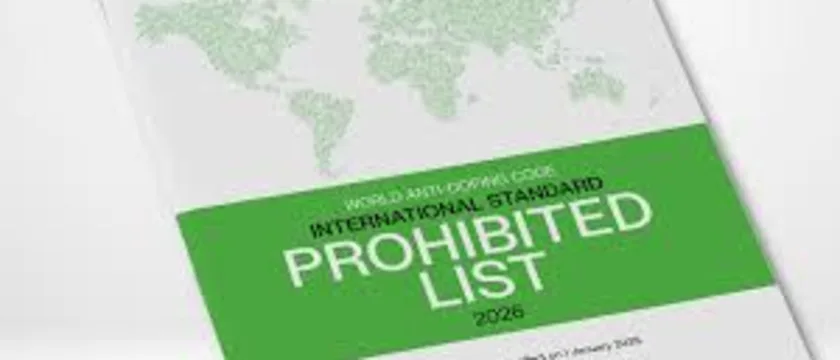2026 WADA Prohibited List: Key Updates
Anti-Doping
The World Anti-Doping Agency (WADA) updates its Prohibited List every year to ensure a fair and safe competition environment for athletes. The 2026 Prohibited List introduces several important changes, including new examples of prohibited substances, clarifications on existing rules, and adjustments to certain categories.
Key Updates for 2026:
- Substance Shifting to Prohibited
One substance or method has changed from permitted to prohibited (see Section M.1). - New Examples and Clarifications
- Anabolic Agents (S1): WADA clarified in S1.1. that esters of the prohibited steroids are also prohibited.
- Beta-2 Agonists (S3): The dosing interval for inhaled salmeterol was updated, to avoid potential ergogenic effects beyond therapeutic action. The maximum delivered dose is unchanged at 200 micrograms over 24 hours.
- Peptide Hormones & Growth Factors (S2): Pegmolesatide was added as an example of a new EPO-mimetic agent.
- Hormone and Metabolic Modulators (S4): Two substances, ɑ-naphthoflavone (an aromatase inhibitor) and BAM15 (an AMP-activated protein kinase), found in supplements, have been added.
- Gene & Cell Doping (M.3): WADA now prohibits cellular components (e.g., mitochondria and ribosomes).
- Blood Manipulation (M.1)
WADA clarified that not only the reinfusion but also the withdrawal of blood or blood components (except for medical tests or donations) is prohibited. - Carbon Monoxide (M.1.4)
The non-diagnostic use of carbon monoxide, which can enhance red blood cell production, is now prohibited. - Stimulants (S6):
Two unapproved stimulants, flmodafinil and fladrafinil, were added to the list of non-specified stimulants in section S6.A. These unapproved substances are powerful analogs of modafinil and adrafinil and have been detected in dietary supplements or products sold as research use only. - Glucocorticoids (S9):
It should be noted that sustained-release formulations of glucocorticoids may result in detectable levels beyond the washout period. Therefore, any athlete who needs to use a sustained-release preparation close to the competition period should retain all medical records in case a retroactive Therapeutic Use Exemption (TUE) is needed.
It is important to remember, is that the WADA Prohibited List is not exhaustive, and substances may fall under broader prohibited categories even if they are not specifically names on the list. Encourage your players to consult a sports medicine doctor experienced in anti-doping before taking or using any medication. Under the principle of strict liability, players are ultimately responsible for anything found in their system, so it’s always better for them to check first than risk a violation.

